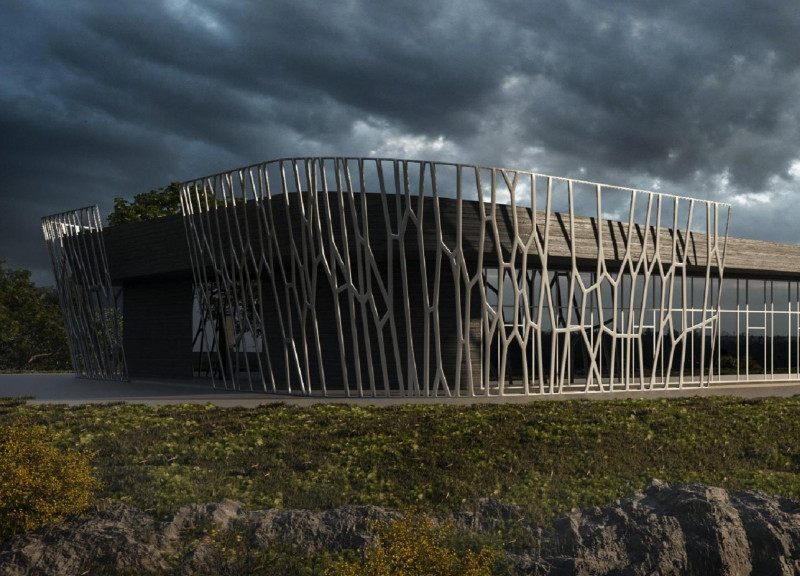5 key facts about this project
The Museum Volcano is located in Iceland, where the landscape is marked by volcanic activity and stunning natural beauty. The design focuses on creating a space that encourages visitors to connect with their surroundings. Central to its idea is the concept of "natural building is a nature in the building," emphasizing how the structure blends with the environment rather than standing apart from it.
Design Layout and Functionality
The layout is organized into several key areas, primarily situated on the ground floor where exhibition halls, administrative offices, and reception spaces are found. This arrangement promotes easy movement for visitors and ensures that they can navigate the museum with ease. Each exhibition hall is thoughtfully placed to encourage exploration while maintaining a clear flow between sections of the building.
Spatial Experience
Inside the museum, the experience is designed to feel open and welcoming. With high ceilings ranging from four to four and a half meters, the space has an airy quality. Large windows strategically positioned throughout the building allow sunlight to enter, creating bright interior spaces and offering views of the Icelandic landscape outside. This connection to nature is a core aspect of the design and improves the overall visitor experience.
Material Considerations
Material choices are made to align with the eco-friendly focus of the design. Wooden coatings are used in the passageways to create a warm and inviting atmosphere. These details help visitors feel more connected to nature. Additionally, while some ceilings incorporate wooden elements, extensive use of glass for the facades enables unobstructed views of the outdoor scenery. This design choice reinforces the relationship between the museum and its natural context.
Architectural Form
The architectural form features gentle, flowing lines that mimic the shapes found in the surrounding landscape. Such design elements reflect the local topography while also creating an engaging visual presence. The building functions as more than just a museum; it acts as a part of the landscape itself, inviting the outside in through carefully designed sightlines and reflections. Visitors experience the sense of being in nature while exploring the museum's exhibits.






















































